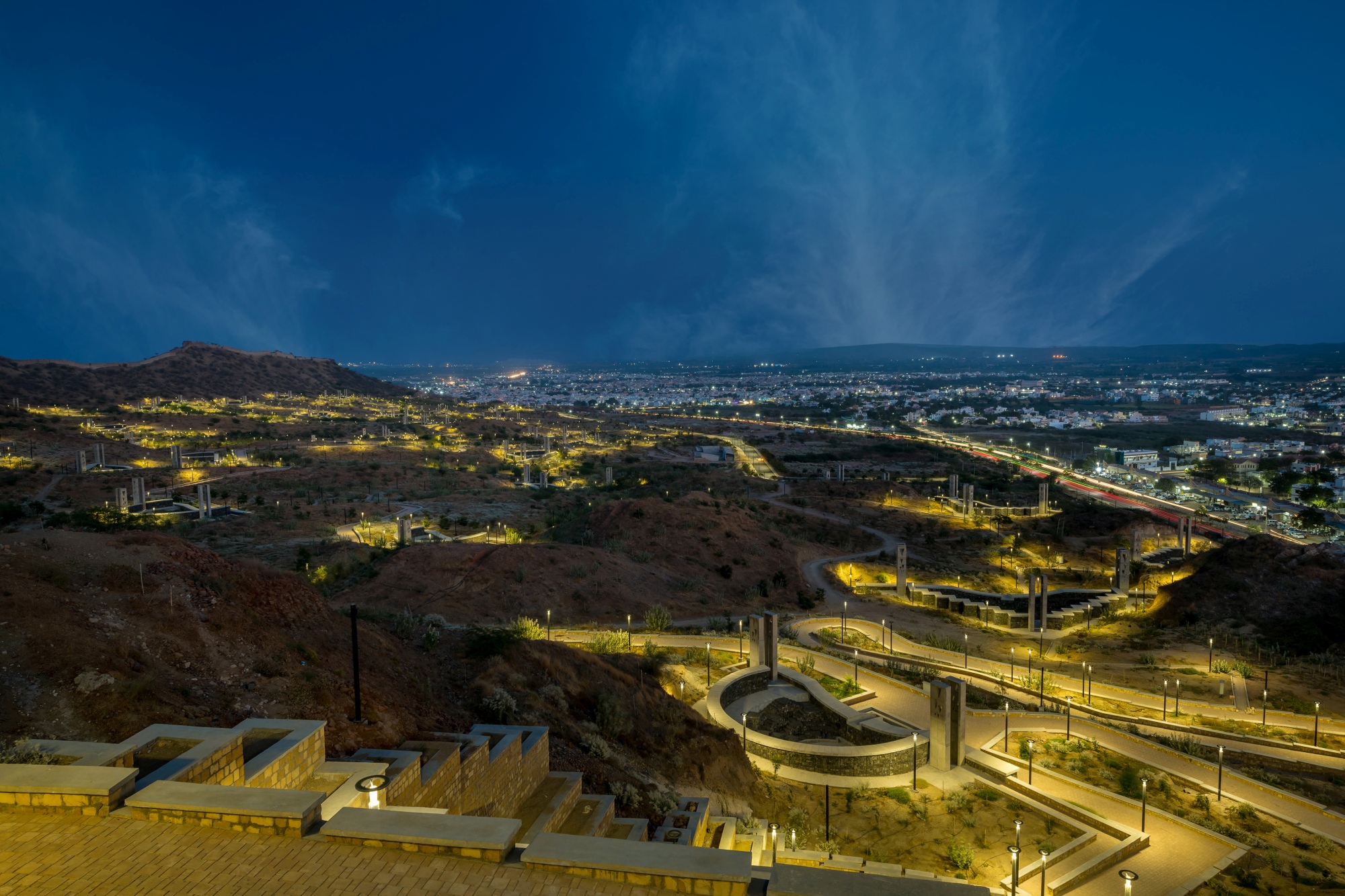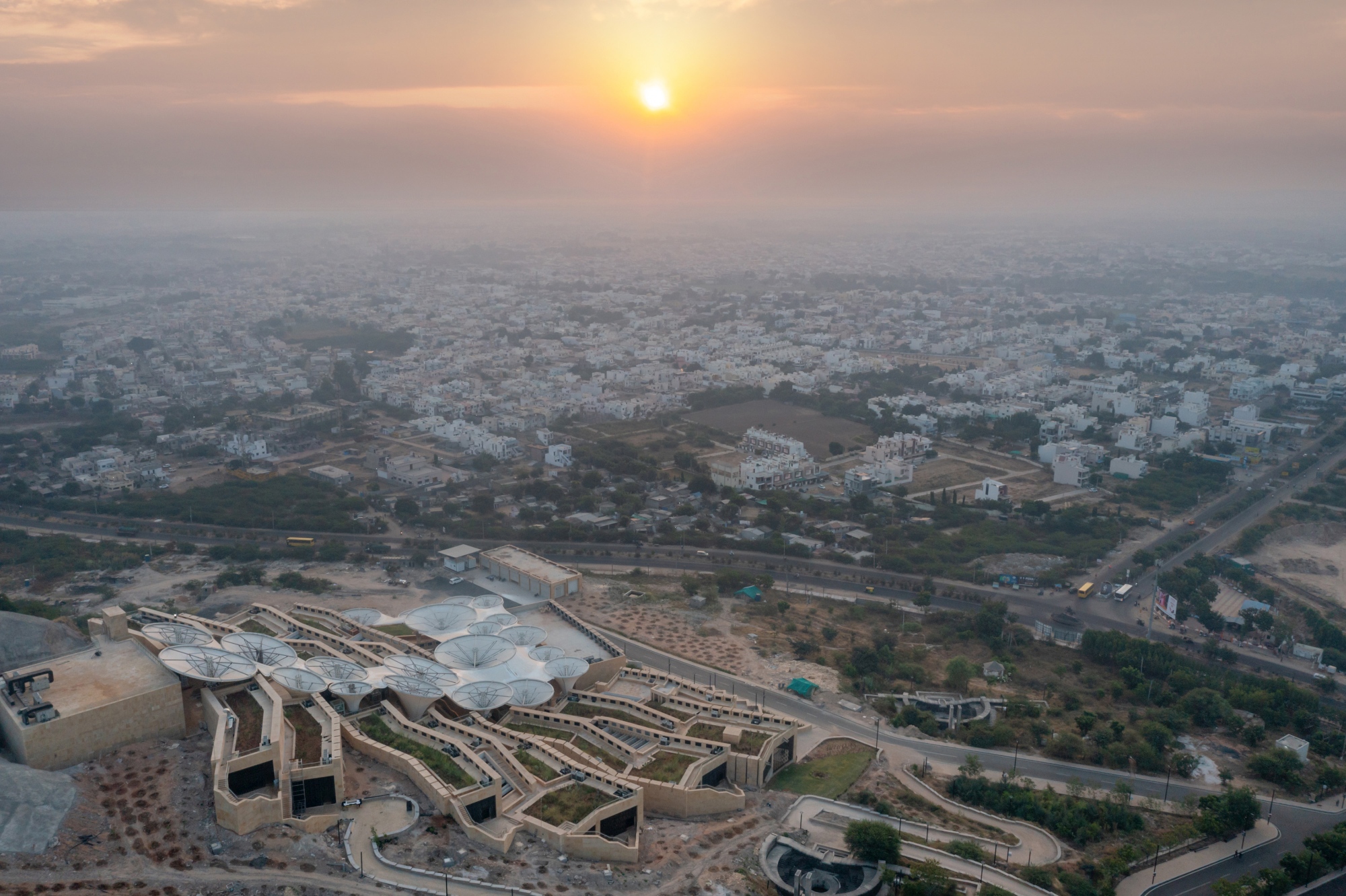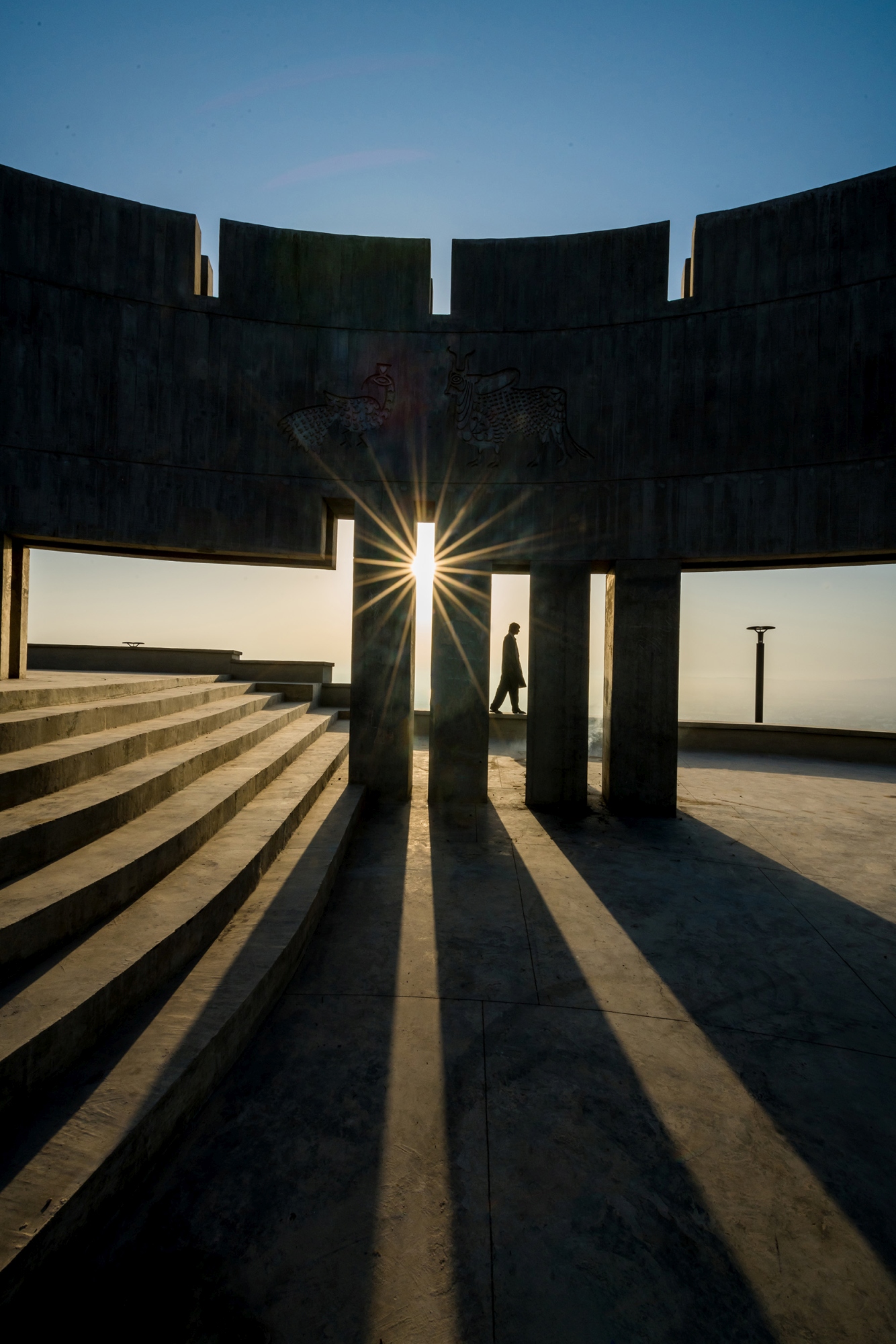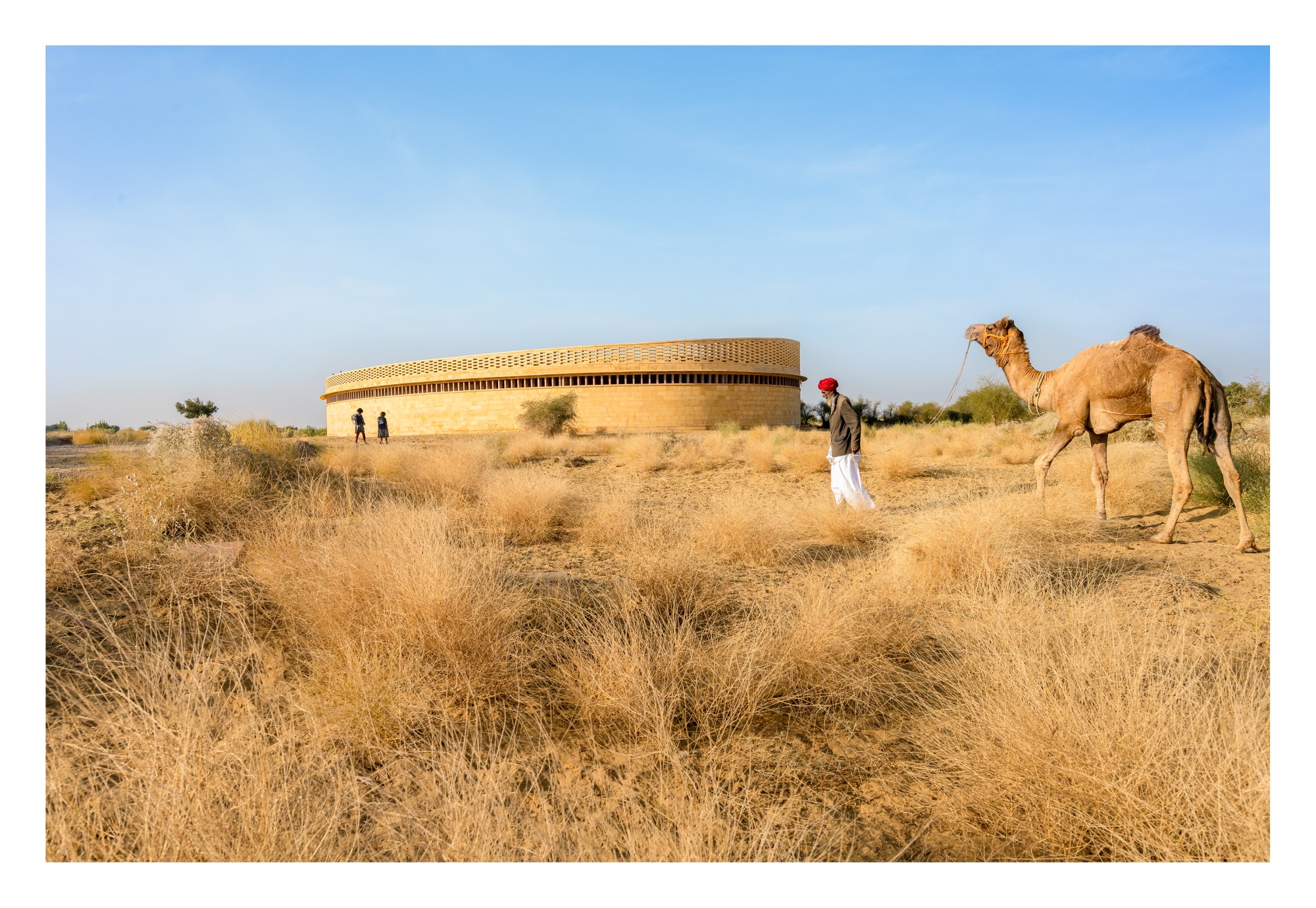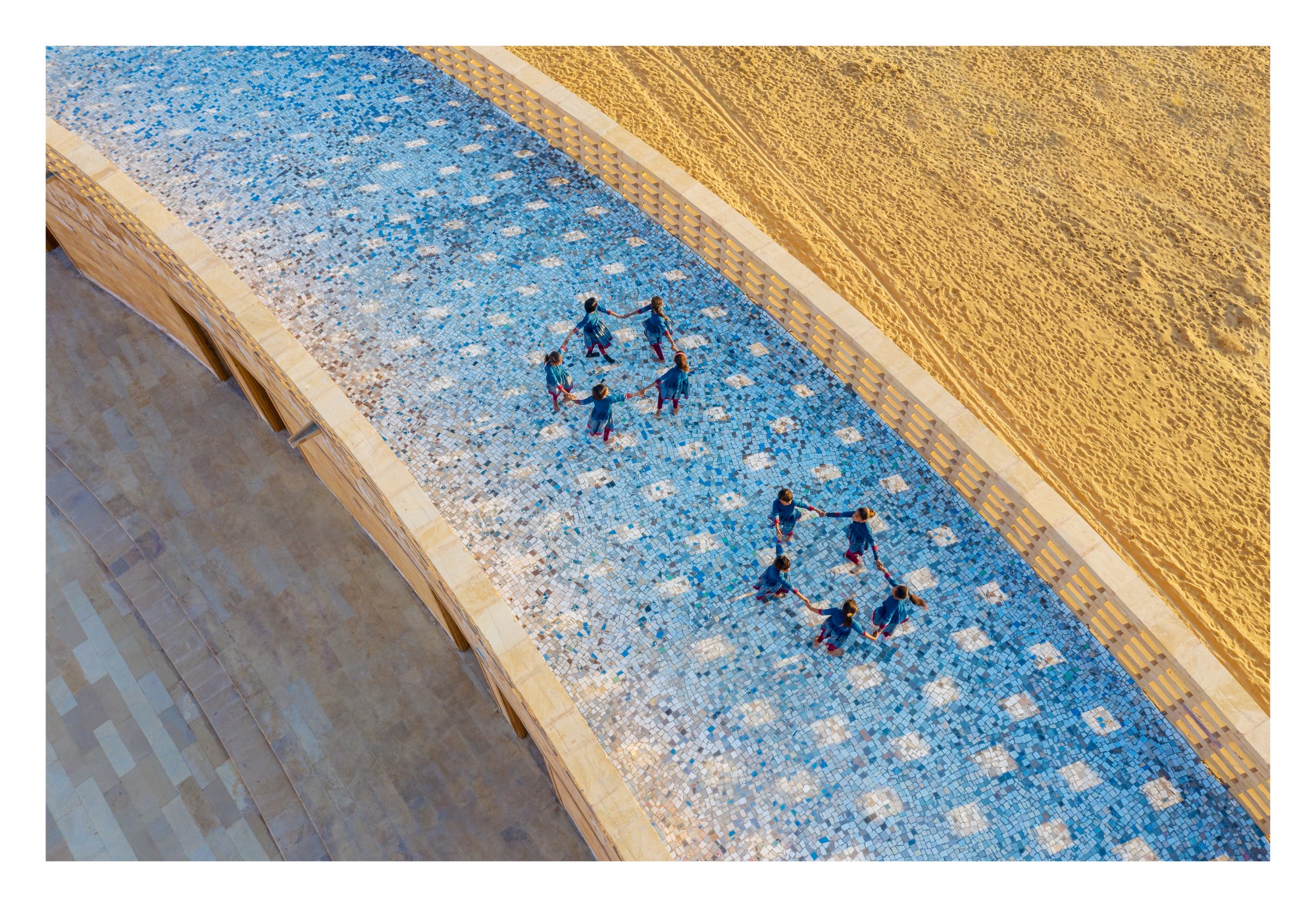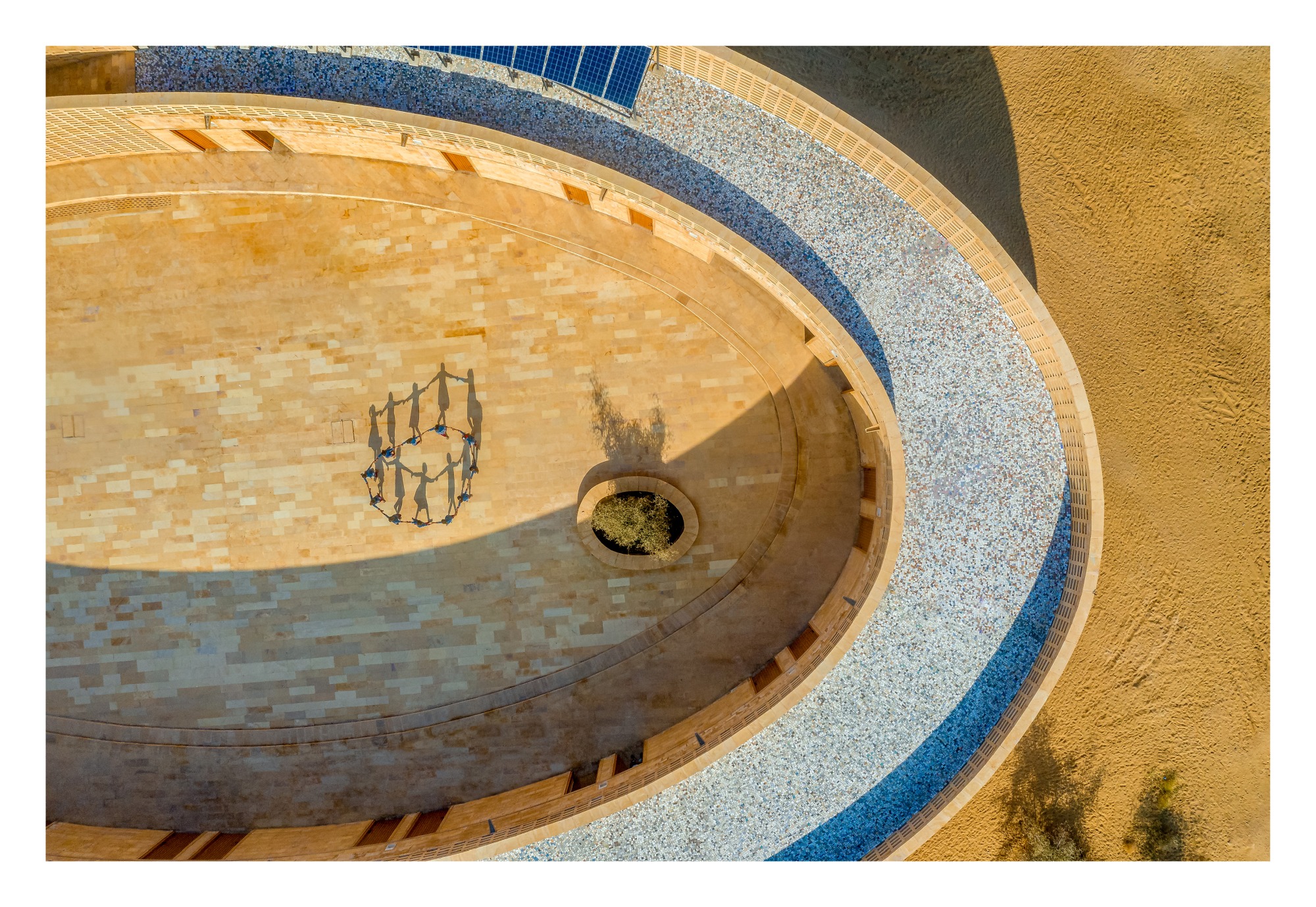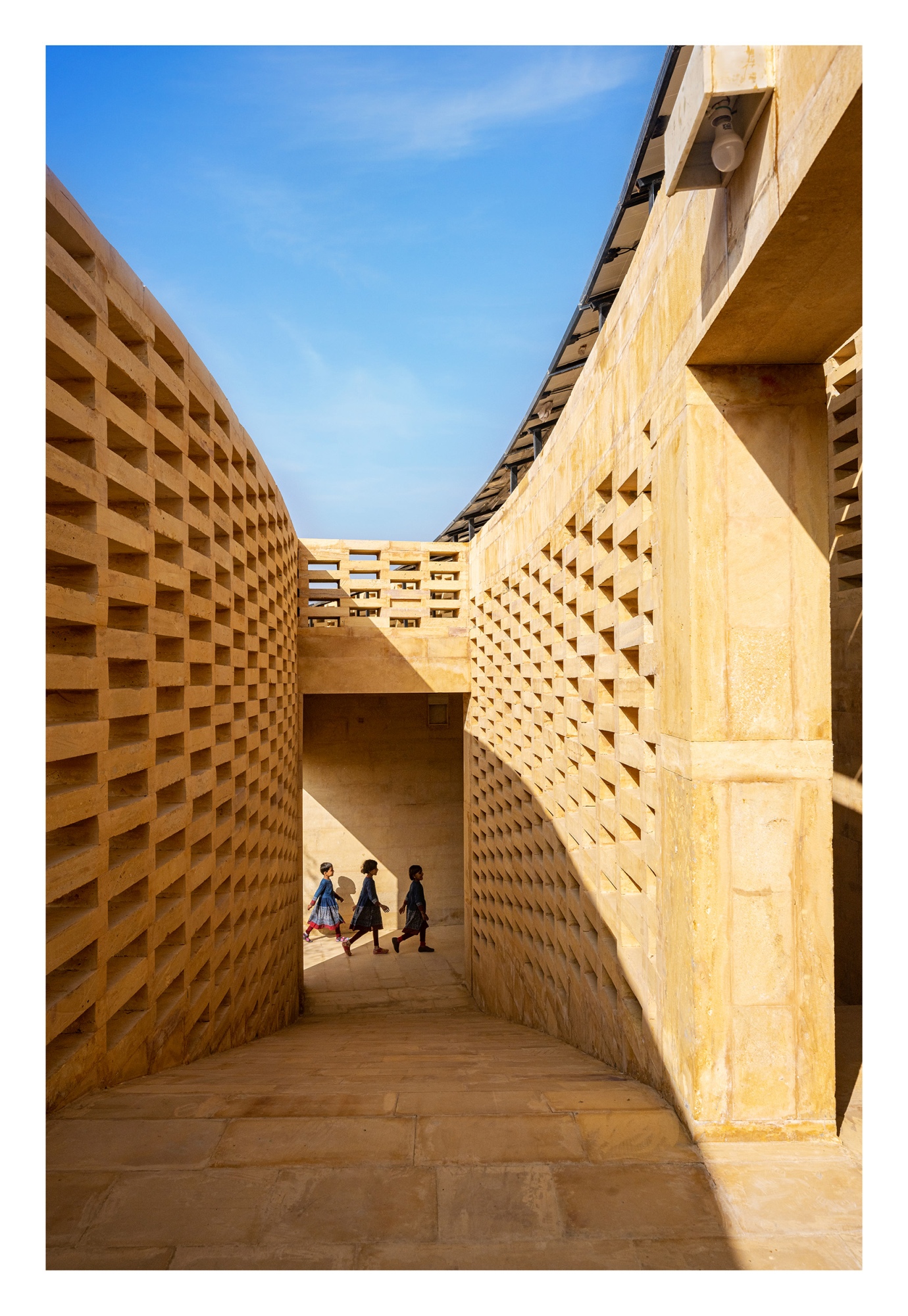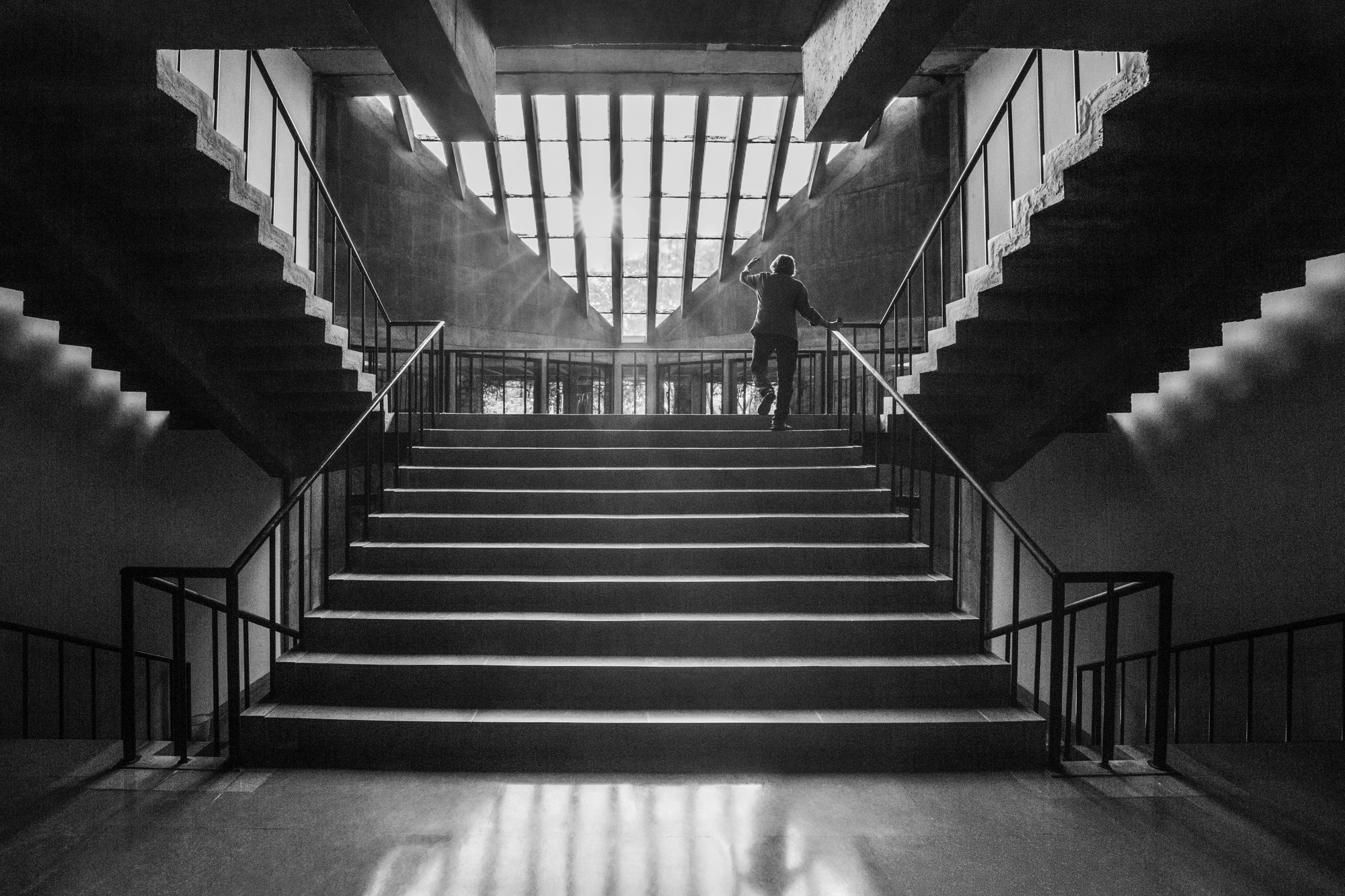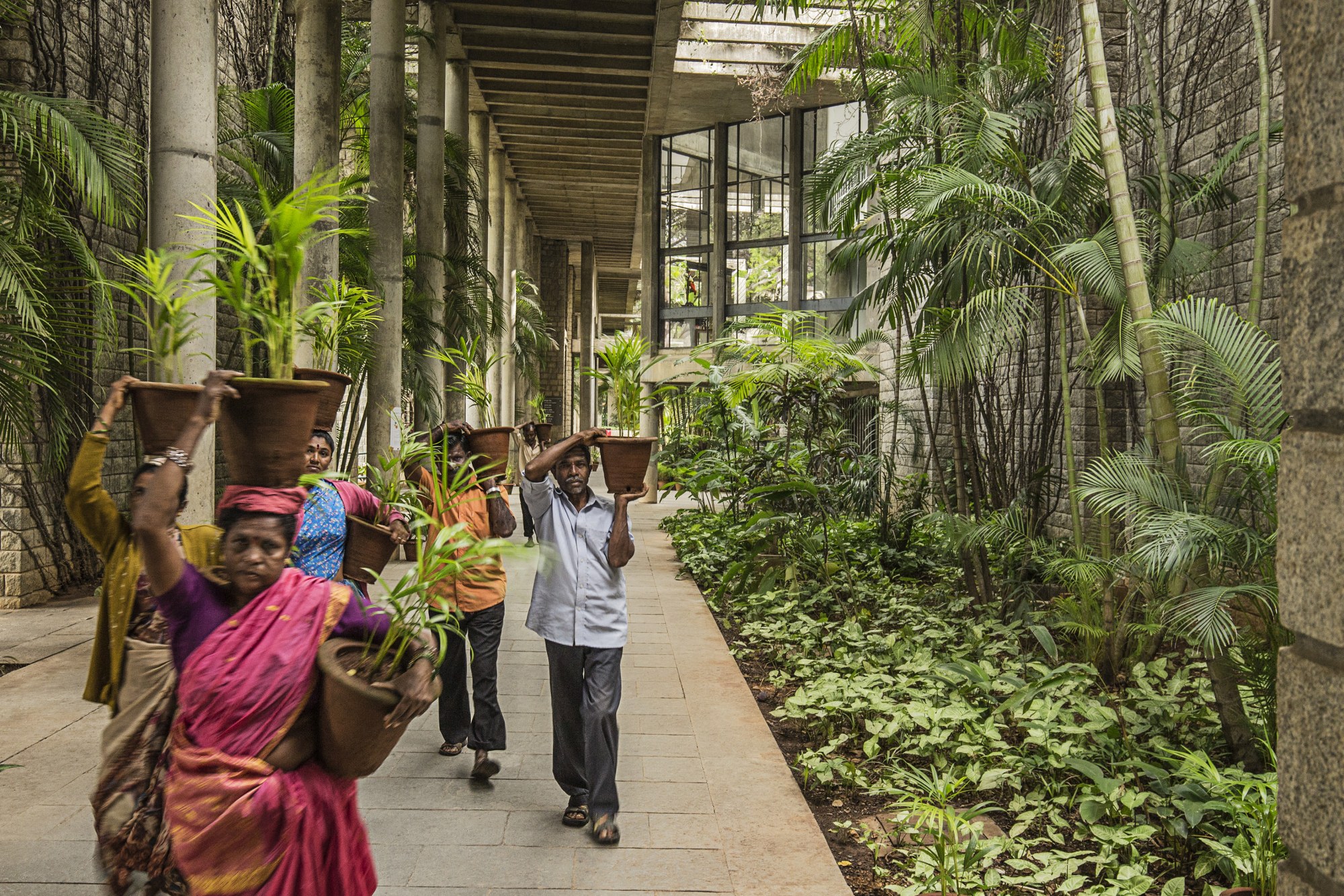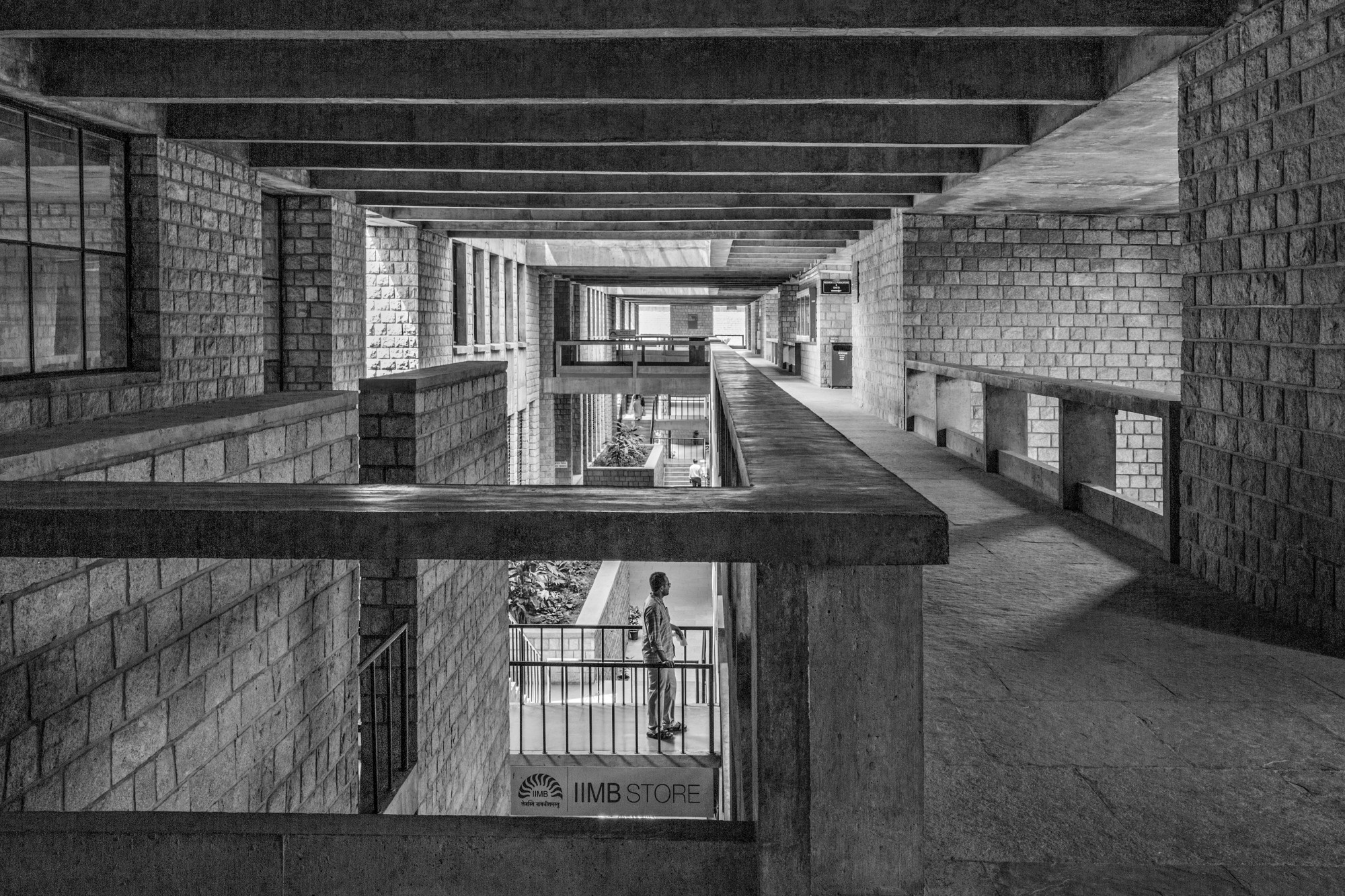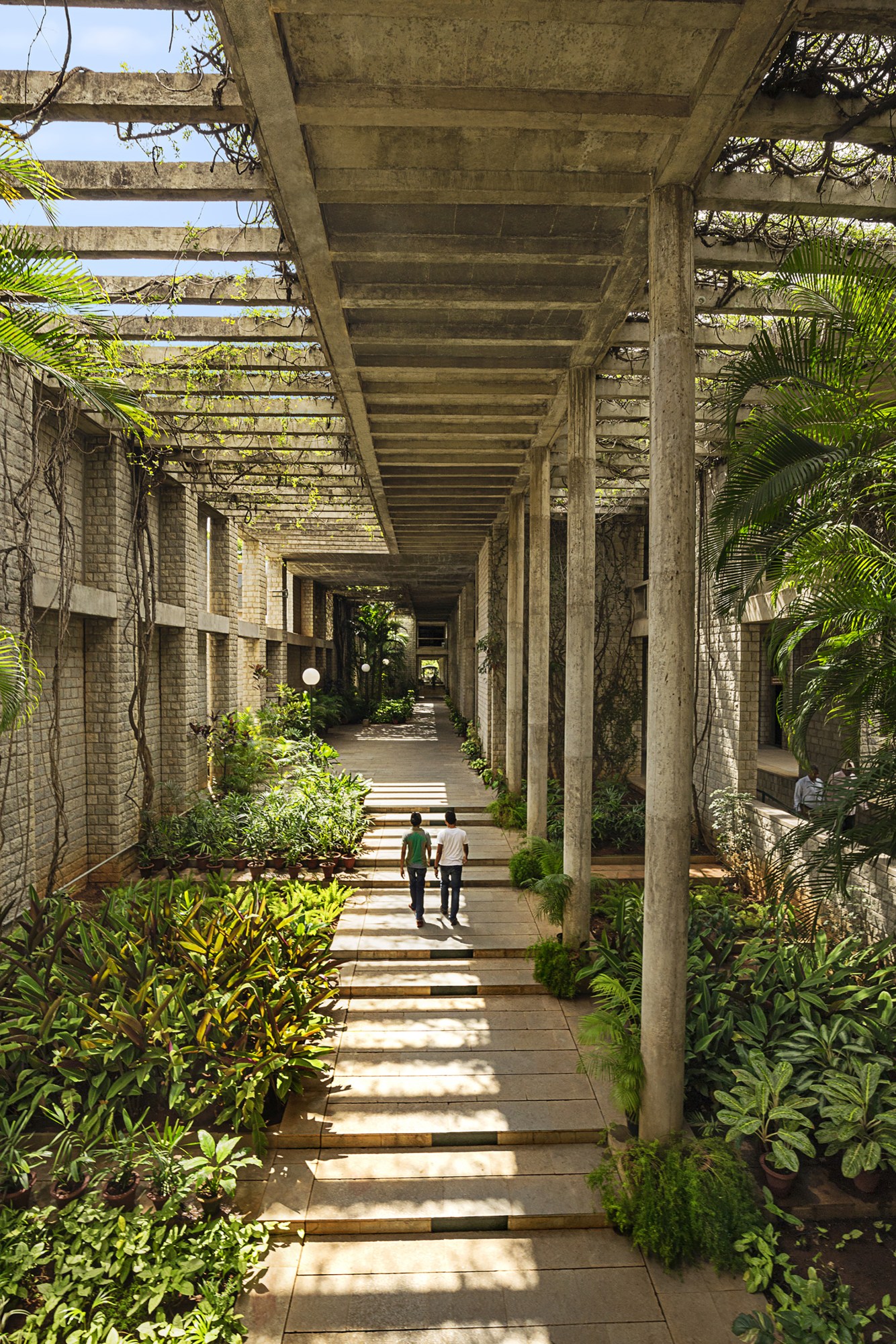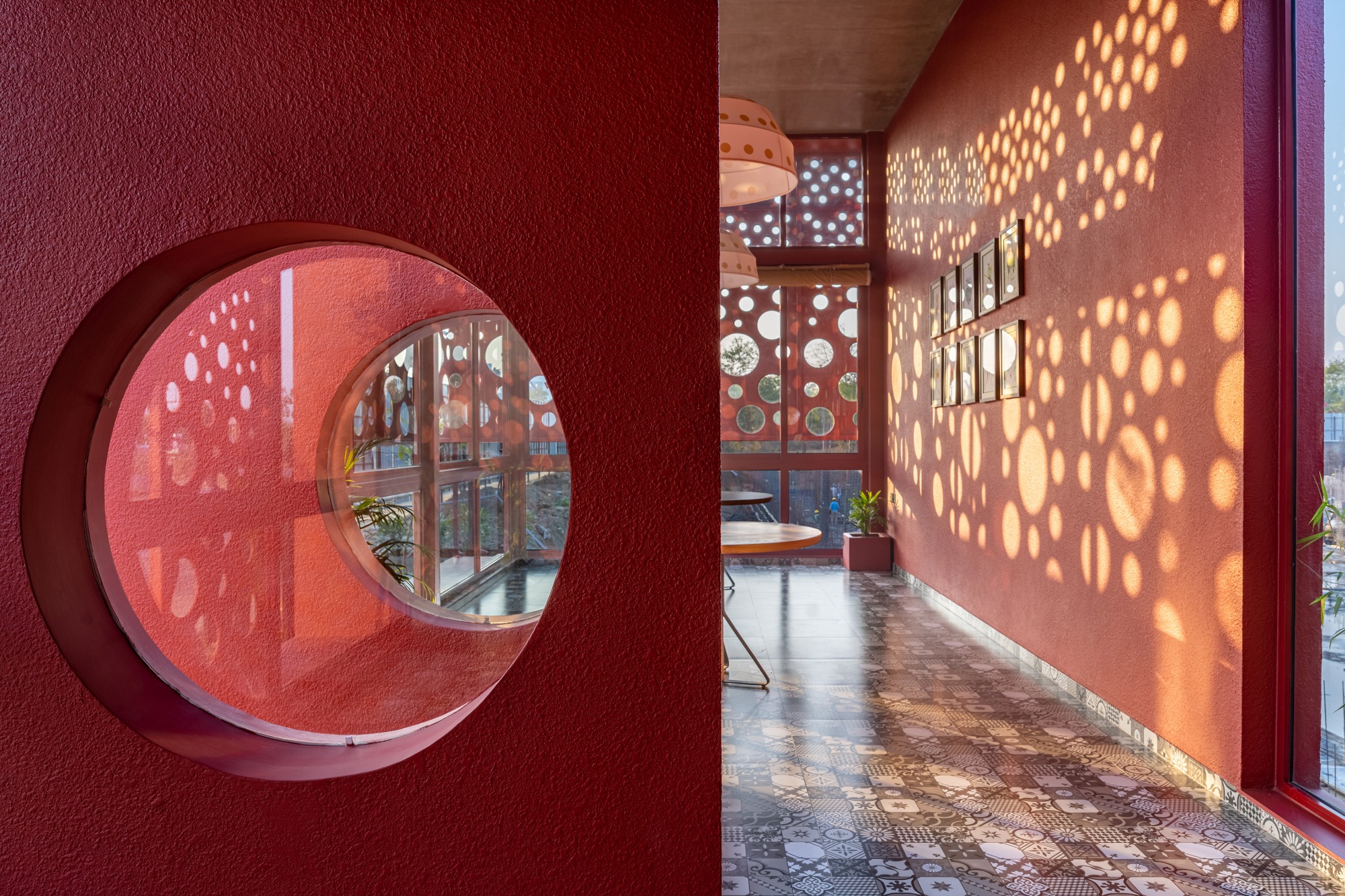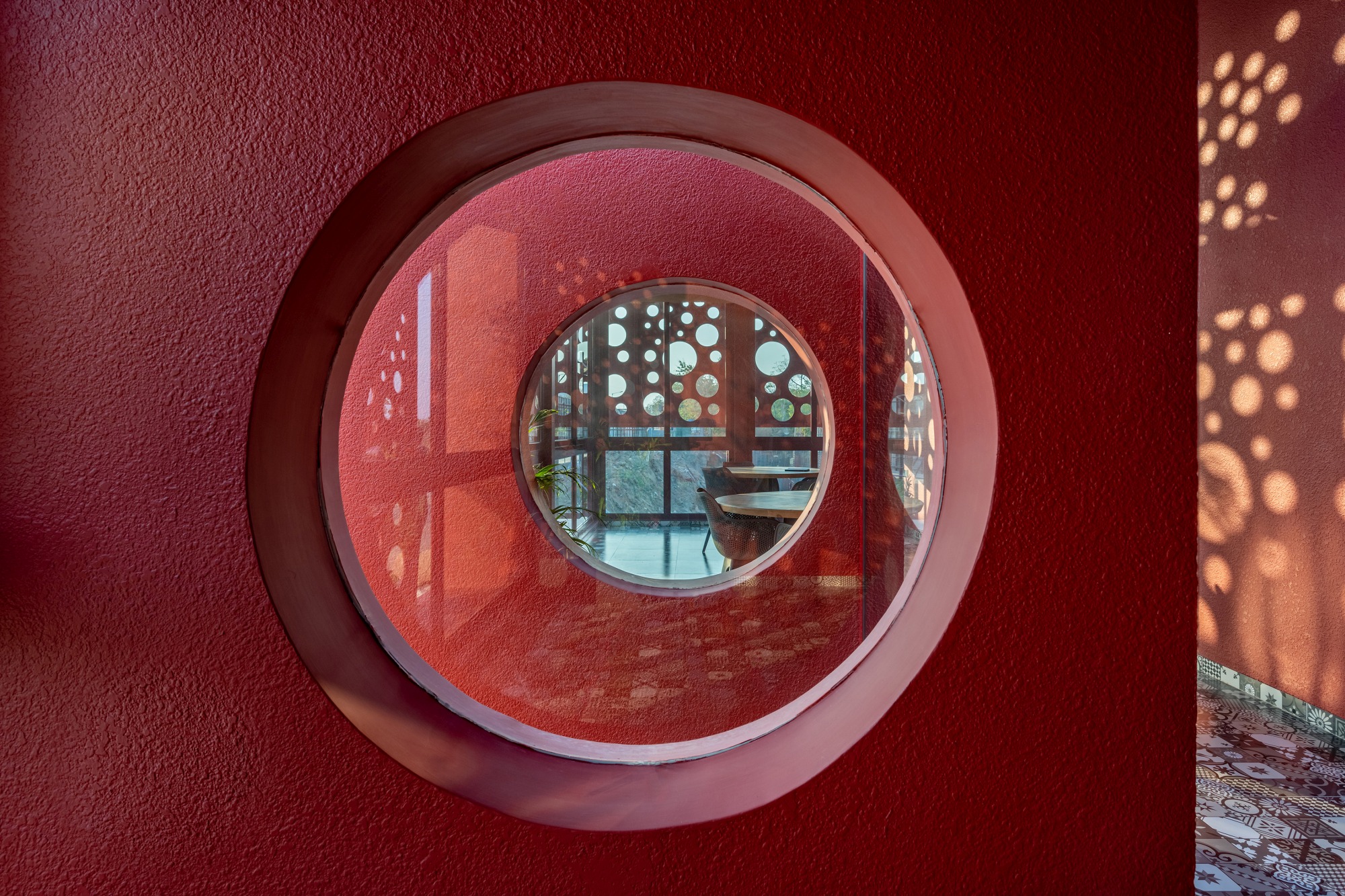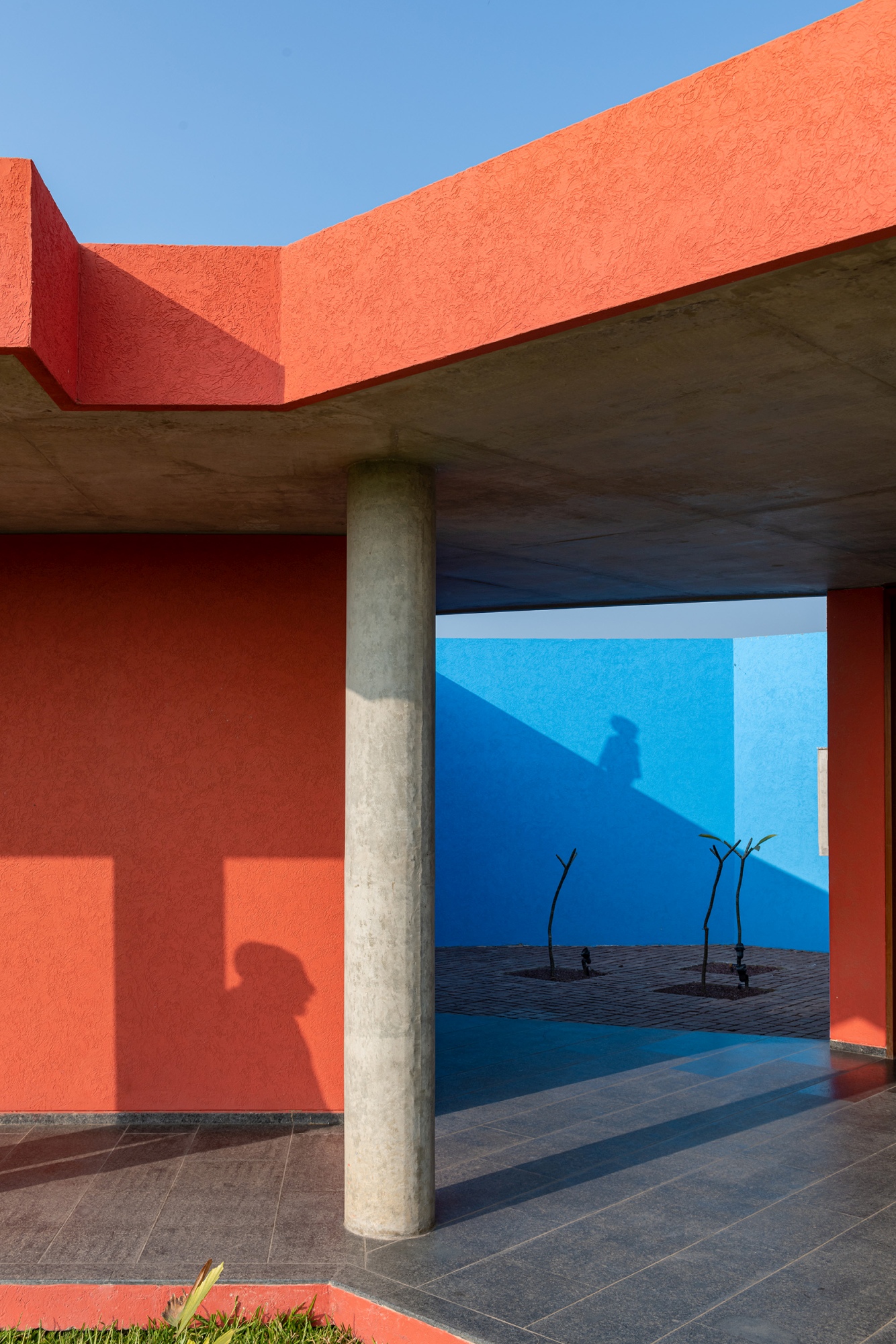Architectural Photography is a medium for the viewer to derive their first impression of a space. Maverick Shutterbugs aims to bring forward the contribution of photography in experiencing, connecting with and understanding architecture.
Vinay Panjwani is a documentary and architectural photographer and filmmaker based out of Ahmedabad. After 20 years of being in the business of plywood, he followed his calling to become a full-time photographer. He currently works with UNICEF and various government ministries and international foundations for documenting human intervention stories. His architectural photography reflects his documentary storytelling style. He has been creating various films for leading architects in the country.
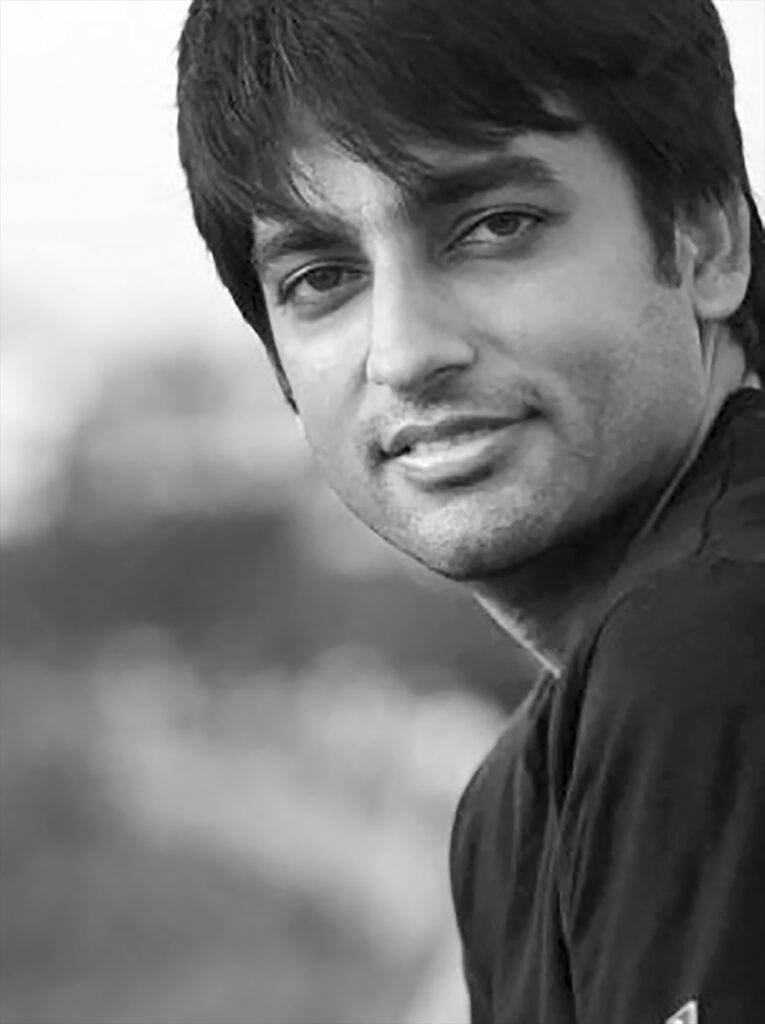
Smritivan Museum | Public Buildings and Spaces | Memorial
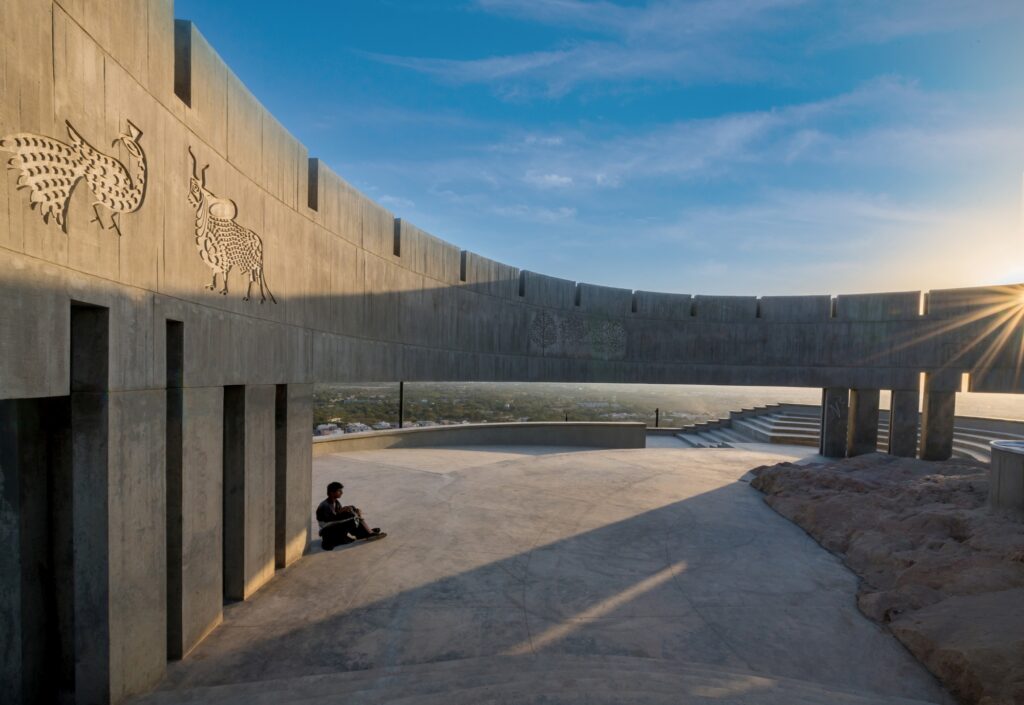
Location: Bhuj
Architects: Rajeev Kathpalia, Vastushilpa Sangath LLP
The beautiful land of Gujarat has never had scarcity when it comes to marvel and awe. The vast arrays of arable fields and wilderness that wrap the state are nothing less than a wonder. To add another gem to this list, India’s largest memorial and museum has recently opened its doors to the public in Bhuj, from the Kutch region.
Smritivan (which can be translated as Forest of Memories), adorned as the largest memorial and museum to ever be built in modern India, covers a vast area of over 470 acres. It is situated on the Bhujiyo Dungar (a small hill) on the outskirts of Bhuj. It also shares the area with the Bhujia Fort, which is over 300 years old.
Created for the bereaved families of the earthquake victims from 2001, Smritivan is a place of pilgrimage, praise for the resilience and reverence of the people of Kutch, and a haven for those who find solace in nature. The memorial consists of a Sun-Point that overlooks the city, the sunrises and the sunsets from atop the Bhujiyo Dungar.
The memorial also consists of the world’s largest Miyawaki Forest, with over 3 lakh plants spread across the entire memorial to create a living, breathing monument that also serves as the lungs for the city of Bhuj.
There’s a locally installed 1.1 Megawatt solar power plant that powers the museum and memorial. The objective of this solar power plant is to have self-sustainable, renewable green energy that leads the way for all future establishments.
The Smritivan Earthquake Memorial has 50 check-dam reservoirs that house the nameplates of almost 13,000 victims of the 2001 earthquake. Along with this, the reservoirs are carefully planned to recharge the surrounding water levels, giving life to the surrounding forests, and the rocks used in these reservoirs will serve as foundations for new life to grow from within their cracks. Each element of the museum focuses on regeneration, sustainability, and hope for a better future.
With the opening of the museum, the innocent lives lost more than two decades ago will now be immortalised and commemorated for posterity – in an ecologically sustainable, historically profound, and sensorial enriching manner for the individual and collective cultural enhancement of future generations.
The size of the Smritivan Earthquake Museum is 11,500 sq. m. which encompasses 7 different blocks (further divided into sub-galleries) that constitute the monument, and every one of them is unique, educational, interactive, and something straight out of science fiction.
When I went for a recce at Smritivan for the first time, I saw local Kutchi people with cattle and local women filling water pots at the almost finished structure. Being a documentary photographer, I included them in almost all frames which made the images more special.
I believe people don’t only give scale but they give a soul to architecture.
Rani Ratnavati Girls School | Rural Architecture

Location: Jaisalmer
Architect: Diana Kellog
Constructed with hand-cut local sandstone, The Rani Ratnavati Girls’ School will address the need to educate girls and empower women from the neighbouring villages in Jaisalmer, Rajasthan. The oval forms were employed to reflect the curvilinear shapes of the local forts and also universal symbols of female strength. Architectural Digest India featured RR Girl’s School in its December 2020 issue, and at the same time, they announced it as the Building of the Year!
The project was completed for the non-profit Citta Foundation.
I was commissioned by Diana to photograph this lovely building in 2021. This was one of the most meaningful pieces of architecture I have ever come across; simple yet very powerful. The thrill that the girls would get when inside the building gave me the inspiration to do a film also on the structure. The images have been widely published across all major platforms in the world.
Indian Institute of Management, Bangalore | Large-scale Campuses and Institutions

Location: Bangalore
Architect: Ar. BV Doshi
Shooting for BV Doshi was my first tryst with architecture. I am blessed to have photographed him and most of his projects over 10 years. We have done exhibitions across the globe on his works, the recent one being at the University of Massachusetts Boston.
Doshi has been the biggest inspiration in my life to become a better human being and then a good architectural photographer. He was the first one to explain how humans make a structure alive and always encouraged me to shift my career from being a plywood merchant to a full-time photographer.
IIM Bangalore is a building which merges with nature at its best. The play of light and the walkways which lead into and out of the building are the most amazing structures I have ever come across.
I remember at about the age of 88/89, Doshi sir took six rounds of the huge campus with me and was as excited and also shooting himself throughout with his small camera like a small child showing his lovely creation.
Shibori | Buildings and Interiors
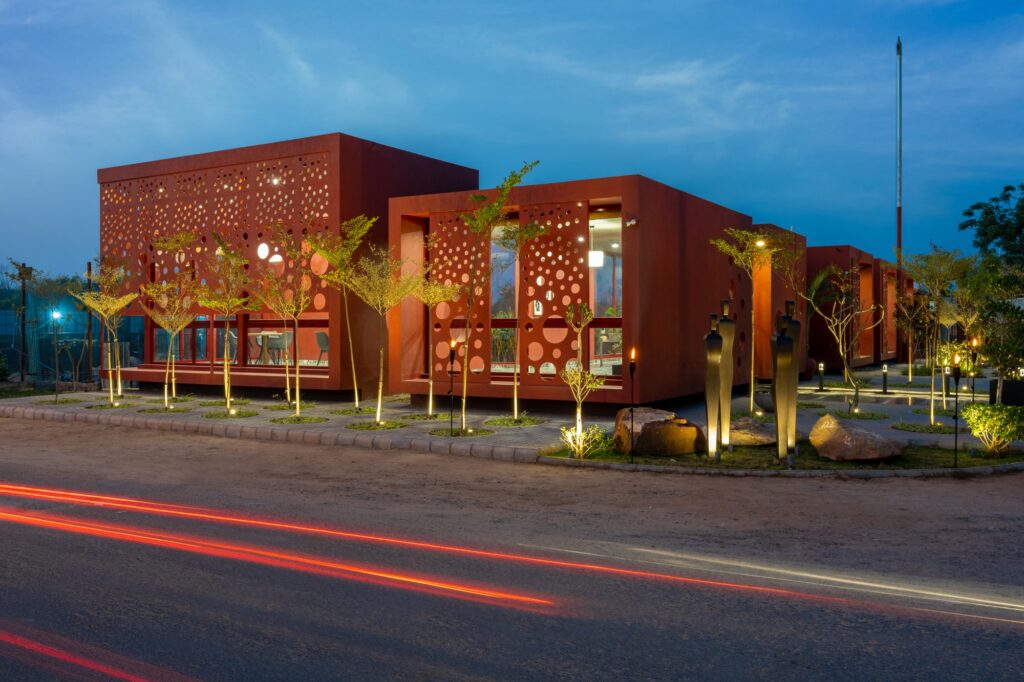
Location: Gandhinagar
Architects: The Grid Architects
This is a site office of a real estate development where visitors can familiarise themselves with the salient features of the premium Apartment scheme. Therefore, it became more than just a workspace — it also carried the responsibility of demonstrating some of the core concepts of the upcoming scheme — which were attention to context, an out-of-the-box articulation, and the harnessing of natural resources integrating the core philosophy of biophilia. The site stands at a corner junction and will eventually enjoy the widest road in the city. It is surrounded by prime educational institutes and hi-tech office buildings. Light is everywhere- its dynamism and incredible ability to transform any space throughout the day through the drama it creates in conjunction with architectural features are unmatched. In this particular case, the epiphany was the rays of light flowing in through the holes in a tin roof of a structure at the site. The dotted effect of the sunlight had a powerful effect on that space, and we set out to harness a little bit of that power. The result was a perforated built fabric that was permeable to sunlight. The dots turned our minds to Shibori, the Japanese resist dyeing technique characterized by circles and circular forms. Spatially, the circles/cut-outs are actually a perforated entrance/envelope which welcomes sunlight and creates patterns that enact a powerful drama through the day. The gradation of punctures is strategic: the larger cut-outs are at the bottom and the smaller ones are at the upper part to allow the sunlight to come in a controlled, comfortable manner. In tandem with sunlight, materials, textures, and colour play their part, too, in the narrative.
This project caught my eye when I first saw one image posted by the architects. I called them and, for the first time in my career, told an architect that I needed to photograph this project if not for you, for myself. They were very happy to hear this and very kindly gave me the opportunity. Since then, we have been shooting many projects with them.
House of 7 Courts | Buildings and Interiors

Location: Mehsana
Architects: PVDRS, Ahmedabad
Located on the outskirts of Mehsana, this farmhouse was built for clients who had just one requirement – a three-bedroom house. Hence the architects were given complete freedom to explore various materials, colours, and building techniques. The house was designed based on the principles of passive design. Maximizing the natural flow of air and daylight was necessary for the hot and dry climate of Gujarat, located in the western part of India. The transition between open and built spaces highlights the use of colours and the play of light and shadows throughout the house.
Site Planning – The mass of the house was placed in the Northeast to capture the cool Southwest Breeze. In the East, dense vegetation was planted to act as a visual and noise barrier from the highway. The remaining part of the site is converted into a landscaped lawn with a curved pathway and various landscaped elements and local plants and trees.
The Seven Courts – Responding to the hot and dry climate of this region, the spaces are oriented along the North-South axis with parallel solid walls along the East and West to reduce solar heat gain. This climatic orientation led to the rise of seven courtyards inside the house, three in the public areas like living and dining, and four private courts attached to the bedrooms and bathrooms. A deep south-west facing verandah is provided to avoid any direct solar gain during summer, ensuring the penetration of the early winter sun inside the main spaces.
As a photographer, what struck me most on how the architects had drawn inspiration from a chimney of a brick kiln behind the house and made the form.
When I visited the house, I saw a small child who was the caretaker playing all around the space. I loved his interpretation of the spaces and decided to shoot the house from his perspective. It worked well to include him as a part of the narrative.
Achievements
- He has done six solo shows, and his works have been exhibited at Vitra.
- Design Museum (Switzerland ), Munich, Germany, Shanghai power station of Art, National Gallery of Modern Art, Vienna, Austria.
- His films and photos are part of the BV Doshi exhibition at the University of Massachusetts Boston
- He has won several awards from CNN, Sony world photo, I&B Ministry etc.
- He was featured by National Geographic at Mission Covershot in 2013
- He is a brand influencer for Nikon in India.
- He has been a part of several books, the recent one being Architecture for the People winning an award for best book on Architecture in London.



